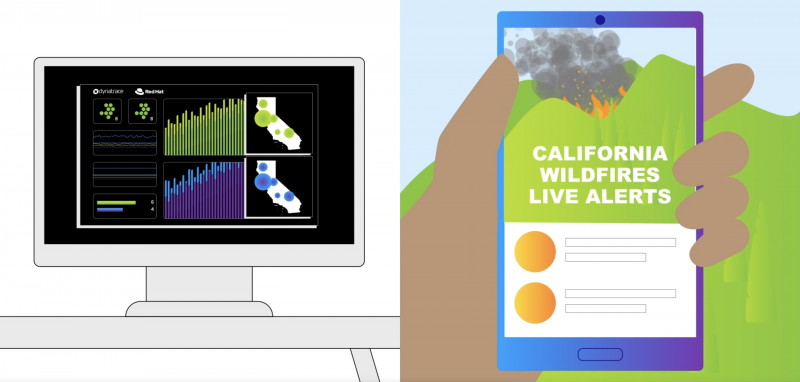Accessing a website isn’t normally a life-or-death situation. But in November 2018, it was. A massive, destructive wildfire was burning in California, and nearly 300,000 people had to be evacuated.
The county where the wildfire raged needed to reach its constituents and prepare for critical amounts of high traffic — 250% higher than its allotted infrastructure at the time. If the website didn’t stay up and provide information, lives could be at stake.
Much like this county, all levels of government are under pressure to digitally transform as customers’ need for digital services and information increases. This reality has led to a dramatic shift away from static data centers and monolithic workloads to a more agile, efficient and flexible approach. The new approach will feature cloud architectures with dynamic microservices powered by containers.
- Microservices are both an architecture and an approach to writing software. With microservices, applications are broken down into their smallest components, independent from each other.
- Containers are the ideal deployment unit for microservices. They package and isolate applications with their entire runtime environment — including all of the files necessary to run.
Microservices plus containers represent a critical shift to delivering applications. And in this new era, microservices and containers are revolutionizing the way applications are built and deployed. They provide tremendous benefits in terms of speed, agility and scale. In fact, 98% of enterprise development teams expect microservices to become their default architecture. IDC predicts that by 2022, 90% of all apps will feature microservice architectures.
However, the complexity of IT operations is increasing as agencies deploy these new workloads in production at scale. Agencies are dealing with hundreds, if not thousands, of dynamic microservices and containers, as well as software-defined cloud infrastructure.
The technological complexity this requires is becoming too much for humans to handle. And this complexity can lead to blind spots in performance.
If digital experiences are not measured, how can agencies prioritize and react when problems occur? Are they even aware there are problems? And if experiences are quantified, is it in the correct context? These questions about performance must be answered before agencies are able to provide the extraordinary digital customer experiences they aspire to deliver.
Let’s return to the California county battling wildfires. This county has 11 million users, 3500 virtual machines, and over 500 websites. It knew it needed to grow and improve its digital services and availability amongst rising complexity.
As it looked to scale, enabling faster provisioning and deployment of community services, it recognized that visibility into the health and performance of its applications and infrastructure would be necessary.
The key for this California county, and for other organizations facing the same critical responsibilities, is real-time, full-stack observability into their dynamic environments.
Advanced observability delivers the actionable answers needed to ensure cloud-native applications work perfectly and provide the best experience possible.
Agencies need an all-in-one, automatic, AI-powered platform that provides advanced observability into microservices, with software intelligence to simplify enterprise cloud complexity and accelerate digital transformation.
The California county selected Red Hat’s OpenShift Container Platform coupled with Dynatrace’s AI platform. Doing so, it enabled faster provisioning and deployment of community services as well as deep visibility and early-warning analytic alerts. And on the day of these deadly wildfires, it paid off.
County service teams received alerts when traffic spiked on the website and were able to spring into action, relying on deep observability for answers. As a result, the county was able to provide a resilient, scalable platform to get its users the critical information they needed, and it will continue to do so into the future.
This article is an excerpt from GovLoop Academy’s recent course, “Accelerating Digital Transformation With Observability of Microservices,” created in partnership with Dynatrace and Red Hat. Access the full course here.





Leave a Reply
You must be logged in to post a comment.